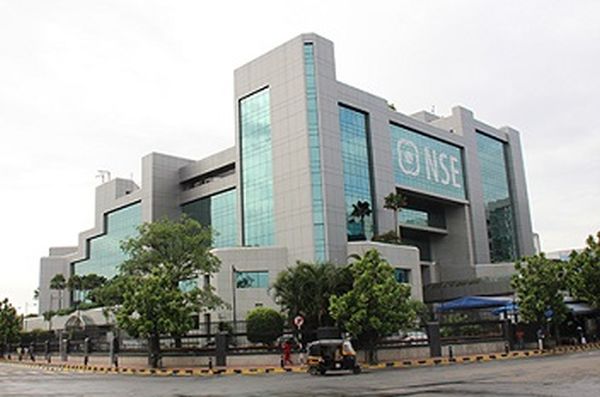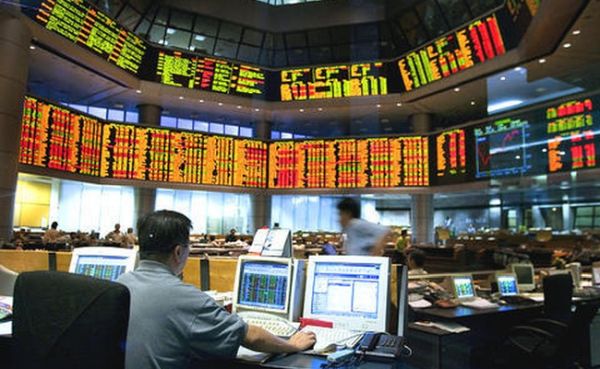
by admin | May 25, 2021 | Business, Investing, Medium Enterprise
 Bengaluru : Leading ride-hailing cab aggregator Ola on Friday said it raised Rs 400 crore from its early investors, including Tiger Global and Matrix India, to fund its electric mobility business.
Bengaluru : Leading ride-hailing cab aggregator Ola on Friday said it raised Rs 400 crore from its early investors, including Tiger Global and Matrix India, to fund its electric mobility business.
“The Rs 400 crore fund from the first round of investment will be used for rolling out one million electric vehicles by 2022 as part of our ‘Mission: Electric’,” said the city-based app-enabling firm in a statement here.
The nine-year-old firm had set up in 2018 Ola Electric Mobility Ltd to use battery-run cabs as a pilot project at Nagpur in Maharashtra.
“We are running several pilots to deploy electric vehicles and charging solutions, including battery swapping stations, electric two-wheeler and three-wheeler services,” said the company in the statement.
Ola executives Anand Shah and Ankit Jain will drive the new business to make electric mobility viable at scale, enabling more clean kilometres on roads across the country.
“Our mission is to enable sustainable mobility for everyone. India can leapfrog problems of pollution and energy security by moving to electric mobility, create hundreds of jobs and economic opportunity,” said Ola Co-Founder and Chief Executive Bhavish Aggarwal in the statement.
—IANS

by admin | May 25, 2021 | Investing, Property
 By Ankit Kansal,
By Ankit Kansal,
India’s housing sector has always been a favorite amongst domestic investors. As an asset, housing has enjoyed high capital growth backed by high demand in major Indian cities.
Besides, easy leverage and recurring rental income further piqued investor interest in the housing sector. However, post the 2014 market slowdown, real estate, which once attracted investment by volumes as high as 40 per cent, saw a gradual dwindling in investor interest.
But, by the end of 2017, the markets started to recover, instilling end-user confidence and stabilisation of property prices in most markets. The bounce-back was eventually followed by expansion in investor activity. As per our recent quarterly consumer sentiment survey, investment activities in five major Indian cities (Mumbai, Gurugram, Noida, Pune and Bengaluru) currently account for around 24 per cent of the market. This is a notable improvement from the previous quarter’s 17 per cent.
The spurt can be attributed to three factors — anticipated property price growth in major Indian cities, high buyer confidence and availability of light-weight investments.
After a prolonged period of price compression, housing markets have started to stabilise in most of the major markets. Going forward, notable growth in housing prices is expected, backed by an upbeat macro-economy and growth in the job market. In fact, early signs of an upward thrust are already visible in some of the popular micro-markets. As prices start going up, this is one of the most conducive times to make an investment.
At the onset of the current FY, reforms such as RERA and GST have finally started to come out of policy contours and play a prominent role in the market. When these policy makeovers were proposed, there was visible distress in the market due to possible uncertainties. However, as the dust settled, the market looked much more mature. Once known for being highly unstructured and unorganised, Indian realty finally seems to be taking emboldened steps towards becoming an organised industry.
A higher degree of order and structure becomes a natural pull for the investor class. As policies such as RERA stipulate transparency in every deal closure, both end-users and investors are gaining confidence.
Numerous light-weight investments such as 1 BHK, studios and micro-homes are gaining a foothold in the Indian housing landscape. Such small units are slowly growing in popularity in many Indian metros, backed by high demand from young, working millennials. In the foreseeable future, the demand for such units will move further up the curve, due to the young demographic dividend in Indian metros.
These units are not just popular amongst the end users, but even investors are gravitating towards them in sizeable numbers. Besides being in high demand, such units offer a lower barrier to entry. Coupled with attractive payment plans, it augurs well for capital investment. As risk appetites are still low and there is a growing propensity towards risk-adjusted returns, small residential units are the perfect sweet spot.
Going forward, investors will continue to expand their foothold in the Indian housing market. On the face of high demand and better organisation, Indian real estate will continue to be an inviting field for investors and end users. However, the market is expected to be largely speculation free and only serious long-term investors will play out in the current scenario.
(Ankit Kansal is Founder and MD of 360 Realtors real estate consulting company. The views expressed are personal. He can be contacted at ankit.kansal@360realtors.com)
—IANS

by admin | May 25, 2021 | Economy, Markets, News
 Mumbai : Broadly negative global cues as well as disappointment over the Reserve Bank’s monetary policy announcement dragged the key Indian equity indices to end in the red for the second straight day on Wednesday.
Mumbai : Broadly negative global cues as well as disappointment over the Reserve Bank’s monetary policy announcement dragged the key Indian equity indices to end in the red for the second straight day on Wednesday.
According to market observers, caution over initial signs on re-emergence of trade tension between the US and China subdued the Asian markets and subsequently impacted the domestic indices.
Even the disappointment over the Reserve Bank of India’s (RBI) decision to maintain its stance of “calibrated tightening” unchanged had its impact on the investor sentiments.
In addition, the RBI’s monetary policy committee (MPC) kept its key lending rate for commercial banks unchanged at 6.5 per cent for the second time in succession.
However, RBI’s announcement to continue its liquidity infusion measures including OMOs (open market operations) arrested the sharp decline in the equity market.
Till now, RBI has injected durable liquidity through open market operation purchases to the tune of Rs 1.36 trillion in the current financial year.
“The pace of our OMOs has stepped up with the injection of slightly over Rs 1 trillion in the last three months. Second, the RBI has also provided liberal infusion of liquidity through term repos in addition to the usual provision via the LAF…,” RBI Deputy Governor Viral V. Acharya said at the post-MPC meeting press conference.
“Based on our assessment of durable liquidity needs going forward, we have already announced an OMO purchase program of Rs 40,000 crore for December. We expect that this increased frequency and quantum of OMO purchases may be required until end of March.”
Index-wise, the S&P BSE Sensex lost close to 250 points, while the NSE Nifty50 settled at 10,784.95 points.
All sectoral indices on BSE ended in the red led by metal, auto and healthcare stocks. Interest sensitive banking stocks traded 1 per cent lower on the BSE.
However, the Nifty IT index saw a recovery as it was the only sectoral index ending in green with marginal gains.
The Sensex settled lower 0.69 per cent, or 249.90 points, at 35,884.41, from its previous close of 36,134.31. It touched an intra-day high of 36,048.65 and a low of 35,777.81.
The Nifty50 lost 84.55 points or 0.74 per cent to close the session at 10,784.95.
“RBI has adopted a cautious approach and held on to rates. Reducing SLR requirement from next quarter onwards is a welcome move,” said Rajesh Sharma, MD, Capri Global Capital.
“Some more measures like reducing risk weight specifically for NBFC lending to MSME sector to boost confidence in NBFCs would have triggered positive sentiment in the sector.”
Just after the monitory policy announcement began at 2.30 pm the Sensex traded lower by
203.62 points.
—IANS

by admin | May 25, 2021 | Banking, Economy, Finance, Markets, News
 Mumbai : Investors deferred equity purchases on Friday, shrugging off a rebound in the rupee and a decline in global crude oil prices, as they turned their focus on key assembly elections for cues.
Mumbai : Investors deferred equity purchases on Friday, shrugging off a rebound in the rupee and a decline in global crude oil prices, as they turned their focus on key assembly elections for cues.
As a result, key equity indices ended slightly lower after a lacklustre trade on Friday.
Also weighing on sentiment was the fact that all the Asian markets closed the day with losses, an analyst said.
The Sensex settled 79.13 points lower at 35,158.55. It had opened at 35,258.13 from its previous close of 35,237.68. It touched an intra-day high of 35,287.29 and a low of 35,011.23.
The NSE Nifty closed 15 points lower at 10,582.90.
“Technically, the short-term trend for the Nifty is choppy at the key resistance of 10,600 level. There is a possibility of continuation of this rangebound movement in the early part of next week as well. A slight weakness may also be expected,” HDFC Securities’ Retail Research Head Deepak Jasani said.
“After this phase of consolidation/minor correction, the Nifty is expected to continue its upside momentum. Immediate supports to be watched are at 10,417-480 levels. On upsides, a breach of 10,616 could result in a move towards 10,710.”
Madhya Pradesh, Rajasthan, Chhattisgarh, Telangana, and Mizoram go to assembly polls this month and the next. The BJP rules in Madhya Pradesh, Rajasthan, and Chhattisgarh, and a return to power in these states will bolster Prime Minister Narendra Modi’s chances of winning next year’s general election.
European indices like FTSE 100, DAX and CAC 40, too, were trading in the red.
The rupee climbed 51 paise to end the day’s trade at 72.49 per US dollar, prompting investors to sell export-dependent stocks. The S&P BSE IT fell 1.19 per cent.
Metals, realty and energy counters also came under a heavy selling pressure. However, the financials managed to cling on to their gains.
The benchmark Brent crude slipped below the $70 a barrel mark.
India imports nearly 80 per cent of its crude oil requirements, and a rise in prices threatens to widen the current account deficit, fanning inflation in Asia’s third-largest economy.
The broader markets like the S&P BSE MidCap index gained 0.66 per cent, while the S&P BSE SmallCap index rose 0.58 per cent.
The market breadth was positive, with an advances to declines ratio of 1.22.
Provisional data with the exchanges showed that foreign institutional investors bought stocks worth Rs 614.14 crore on Friday, while the domestic institutional investors sold scrips worth Rs 337.28 crore.
The top gainers on the BSE were led by Yes Bank, up 5.49 per cent at Rs 227.85; Adani Paints, up 3.79 per cent at Rs 1,298.20; Adani Ports, up 3.14 per cent at Rs 336.85; Sun Pharma, up 2.32 per cent at Rs 595.90; and Hero Moto Corp, up 2.08 per cent at Rs 2950.05 a share.
The major laggards on the Sensex included TCS and Reliance Industries, which fell 1.70 per cent and 1.55 per cent, respectively. TCS closed at Rs 1,909.80 apiece while Reliance Industries settled at 1,093.35 per share.
Others losers included State Bank of India, down 1.27 per cent at Rs 283, Infosys down 2.15 per cent at Rs 661.45 and Bharti Airtel down 2.45 at Rs 298.45 apeice.
—IANS

by admin | May 25, 2021 | Entrepreneurship, News, Politics, Women Entrepreneur

Nowhera Shaik
Hyderabad : Hyderabad police on Tuesday arrested leading entrepreneur-politician Nowhera Shaik on charges of allegedly cheating the investors.
Nowhera, Managing Director of Heera Group of Companies, was arrested in New Delhi and brought to Hyderabad on a transit remand, said Hyderabad Police Commissioner Anjani Kumar.
The arrest was made during the course of the investigations into a case booked against her at Banja Hills police station in Hyderabad for cheating, criminal breach of trust and criminal intimidation.
She was also booked under Telangana Deposits of Financial Establishment Act 1999 and The Prize Chits and Money Circulation Schemes (Banning) Act, 1978.
Police said it found incriminating evidence against Nowhera, who runs various businesses in India and the Middle East. She also floated All India Mahila Empowerment Party, which contested recent assembly elections Karnataka but drew a blank.
According to police Nowhera Shaik is heading 15 companies under different names under the Heera Group of companies.
“Many of the companies are involved in collection of deposits/investments in different modes of gold scheme from public, where in these companies commit a return of around 36% per annum for the invested amount,” a police statement said.
While the exact number of investors / depositors is not known because the companies have not disclosed complete information before the Police, it is estimated that the number of depositors could be in thousands in different states of the country, it added.
Police claimed that during investigation evidences of diversion of funds came to light. Evidence has also been found of purchase of assets in different names of individuals as well as companies, police said.
“Many investors have not been paid their dues since last few months by accused companies. The companies and other accused have not cooperated with Police or provided relevant information during course of investigation. The main accused also made efforts to mislead the Police and avoid the investigation,” the police chief said.
According to police more than 160 bank accounts have been identified across India, details of which are being sought from the concerned bank.
Different properties have been identified and necessary action under the Telangana Deposits of Financial Establishment Act 1999 and The Prize Chits and Money Circulation Schemes (BANNING) Act, 1978 are under consideration, added the statement.
—IANS

 Bengaluru : Leading ride-hailing cab aggregator Ola on Friday said it raised Rs 400 crore from its early investors, including Tiger Global and Matrix India, to fund its electric mobility business.
Bengaluru : Leading ride-hailing cab aggregator Ola on Friday said it raised Rs 400 crore from its early investors, including Tiger Global and Matrix India, to fund its electric mobility business.



